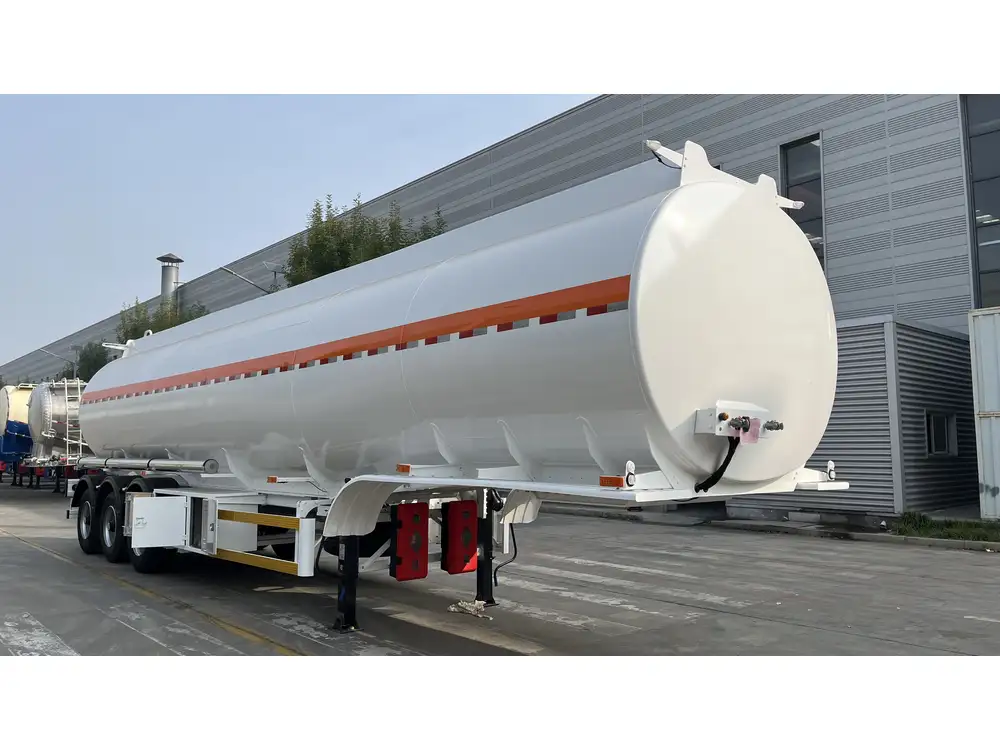Dump trailers are invaluable in various industries, including construction, landscaping, and waste disposal. When it comes to choosing the right dump trailer, understanding its weight capacity is crucial. This article delves deep into the question, “How many tons does a 10 ft dump trailer hold?” and the factors impacting its carrying capacity.
Weight Capacity Breakdown
Dump trailers vary in design, materials, and intended use, all of which can significantly affect their weight capacity. Generally, a 10 ft dump trailer falls into a capacity range that typically lies between 2 to 6 tons. Here’s a structured breakdown:
| Trailer Size | Capacity Range | Common Materials | Typical Applications |
|---|---|---|---|
| 10 ft | 2 – 6 tons | Steel, Aluminum | Landscaping, Construction, Waste Management |
Factors Influencing Dump Trailer Capacity
While the trailer’s length is a pivotal factor, several other elements contribute to the total weight it can carry. Below we outline these crucial aspects:
Material Composition
The type of material used in constructing the trailer significantly affects its weight capacity. Steel trailers tend to handle heavier loads compared to their aluminum counterparts, which, while lighter, may support less weight.
Axle Configuration
The number and type of axles contribute to the trailer’s stability and load-bearing capacity. Dual-axle trailers typically provide more strength and balance, allowing for increased load capacity compared to single-axle models.
Tire Specifications
The trailer’s tires are also vital components in load-bearing capabilities. Larger and sturdier tires can typically support heavier loads, while ensuring better road stability.
Suspension System
A robust suspension system is paramount to maintaining stability when transporting heavy loads. A quality suspension minimizes wear and tear on the trailer while ensuring a smooth ride over rough terrain.
Legal Weight Limits
Regulations restricting weight limits on roads must also be considered. For example, local and federal laws in North America often dictate maximum weight limits, including the vehicle’s weight and the trailer’s combined weight.

Calculating the Total Weight
To determine how much a 10 ft dump trailer can carry, one needs to understand the specifications of the specific model. Here’s a simplified formula:
- Gross Vehicle Weight Rating (GVWR): This is the maximum permitted weight of the trailer when fully loaded.
- Empty Weight of the Trailer: This includes the trailer’s weight without any load.
Payload Capacity Calculation:
[ \text{Payload Capacity} = \text{GVWR} – \text{Empty Weight} ]
For instance, if a particular model has a GVWR of 7,000 lbs and weighs 3,000 lbs itself:
[ \text{Payload Capacity} = 7,000 \, \text{lbs} – 3,000 \, \text{lbs} = 4,000 \, \text{lbs} ]Converting that to tons gives:
[ \text{Payload Capacity in tons} = \frac{4,000 \, \text{lbs}}{2,000} = 2 \, \text{tons} ]Typical Capacity Scenario
In real-world scenarios, a 10 ft dump trailer typically holds anywhere between 2 and 4 tons responsibly, depending primarily on the configuration discussed above. Here’s a comparative outline:
| Trailer Type | Typical Capacity | Description |
|---|---|---|
| Light-Duty | 2 tons | Suitable for light landscaping materials |
| Medium-Duty | 4 tons | Ideal for general debris and bulk materials |
| Heavy-Duty | 6 tons | Best for heavy construction materials |
Best Practices for Loading a Dump Trailer

1. Distributing Weight Evenly
One fundamental rule to follow when loading a dump trailer is to ensure the weight is evenly distributed. Uneven loads can lead to trailer instability, affecting braking and steering.
2. Avoid Overloading
Even if a trailer is rated for a specific capacity, consistently overloading it can lead to significant safety hazards and reduce its mechanical lifespan. Always adhere to listed capacities.
3. Check Local Regulations
Before proceeding with any trucking or hauling tasks, verify local weight limits on roads to avoid penalties or accidents.

4. Utilize Proper Loading Techniques
When loading materials, consider the weight and volume. Heavy items should be placed low and close to the trailer axles to ensure better stability.
5. Regular Maintenance Checks
Monitoring the trailer’s condition, including tires and suspension, is essential. Regular maintenance can prevent issues that might arise from worn-out components unable to handle the designated cargo load.
Common Applications of a 10 ft Dump Trailer
Dump trailers serve various industries and purposes. Here are some common uses illustrated in a structured manner:
| Application | Description |
|---|---|
| Construction | Transporting aggregates, bricks, or heavy machinery. |
| Landscaping | Hauling soil, plants, or landscaping materials. |
| Waste Management | Removing debris, old appliances, or construction waste. |
| Agricultural Use | Carrying feed or harvest materials. |

Environmental Considerations
Using a dump trailer contributes positively to environmental sustainability, especially when it involves waste removal and recycling efforts. Proper disposal and transportation of waste materials reduce litter and enhance community cleanliness.
Conclusion
In summary, a 10 ft dump trailer can typically hold between 2 to 6 tons. However, understanding the various factors—material composition, axle configuration, suspension, and local regulations—will enable owners to maximize the practicality of their dump trailers while ensuring safety on the road.
Choosing the appropriate dump trailer hinges on its intended use. Identifying specific needs—be it for light landscaping tasks or heavier construction projects—will ensure you select a model that aligns with your load requirements. Always prioritize safety and regulatory compliance to foster a smooth operational experience in whatever field you are in. By following these best practices and understanding the intricate details behind weight capacities, users can maximize their dump trailer’s efficiency without compromising on safety or performance.



